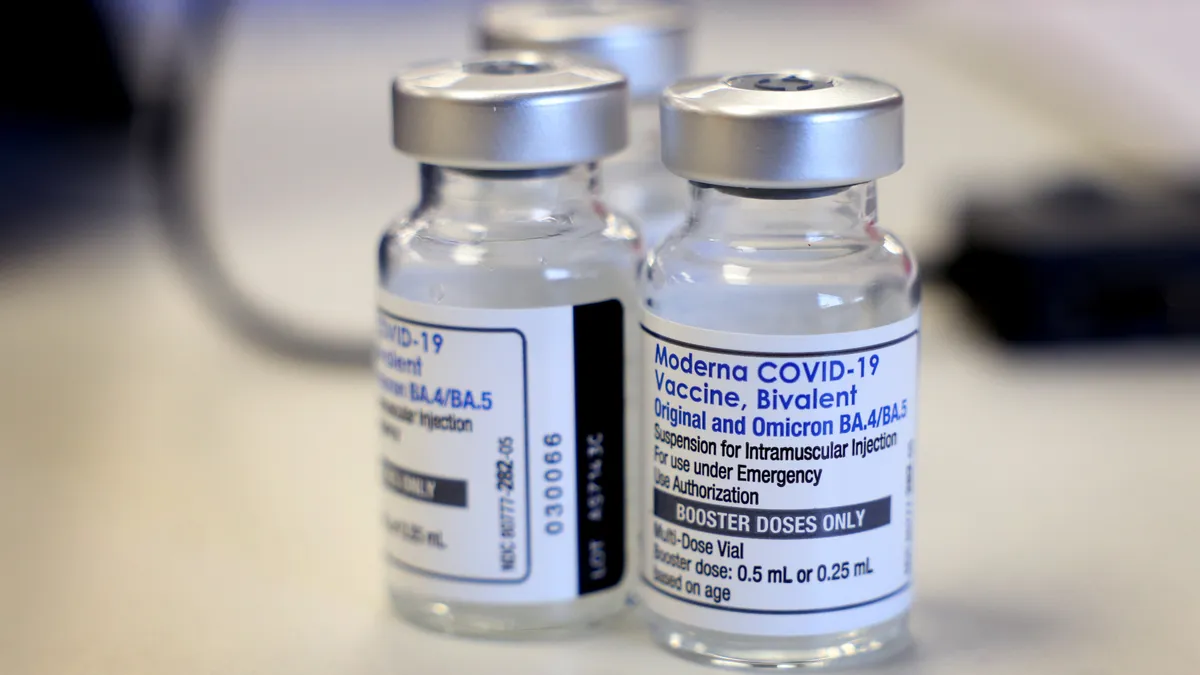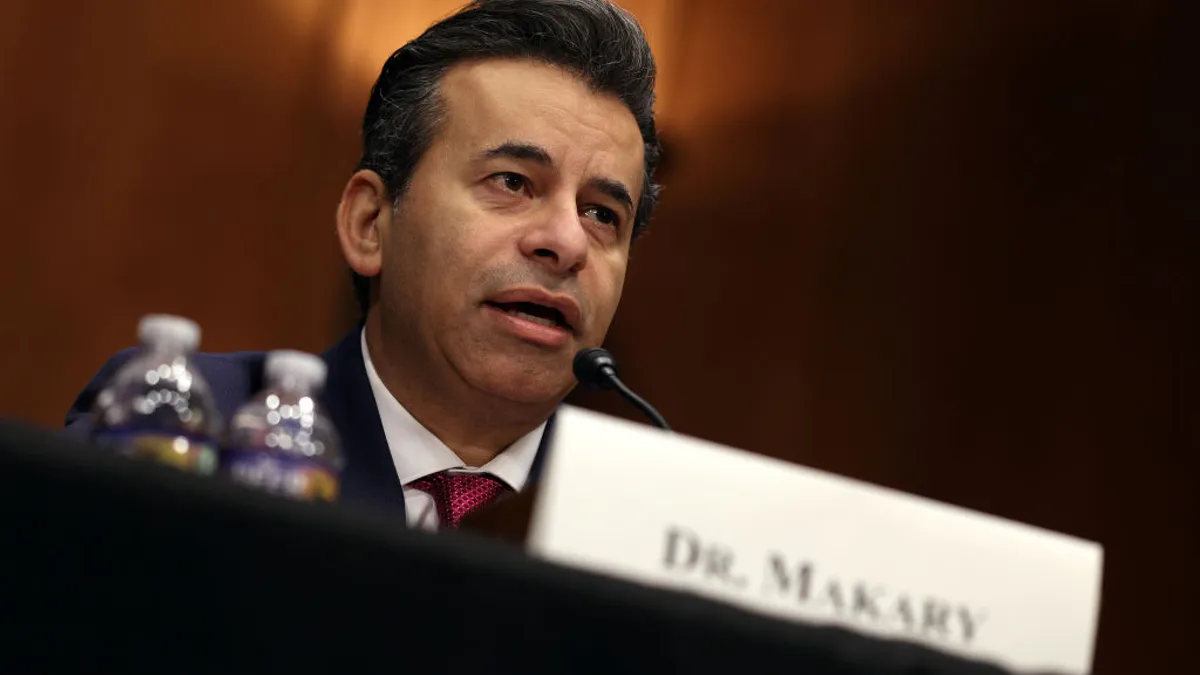The Food and Drug Administration is considering shifting to an annual process for updating COVID-19 vaccines to match circulating coronavirus strains, akin to the current approach for influenza.
The proposal from agency staff, released Monday ahead of a Thursday meeting of FDA advisers, envisions most people receiving one dose each fall of a COVID vaccine that has been tailored to the most prevalent virus variants. People who are likely to have insufficient preexisting immunity, such as older adults, very young children and the immunocompromised, would get two shots.
The advisory committee, which has met periodically over the course of pandemic to provide the FDA with expert counsel, will also be asked whether the composition of primary and booster vaccines should be made the same. The currently recommended booster shots from Pfizer and Moderna target the omicron variant as well the original coronavirus strain, while the primary series only targets the original strain.
The FDA is not required to follow the committee’s advice, but usually does. On Thursday, the committee will also hear from scientists from the Centers for Disease Control and Prevention and the National Institutes of Health, as well as from Pfizer, Moderna and Novavax, another COVID-19 vaccine maker.
The proposal outlined by FDA staff resembles the agency’s approach last year in recommending vaccine makers update their shots to provide better protection against omicron. Since then, what was first known only as omicron has splintered into more than a dozen subvariants, including two — dubbed BQ1.1 and XBB.1.5 — that are now estimated to account for most of the roughly 50,000 COVID-19 cases reported each day in the U.S.
“The large number of mutations in the omicron variant sublineages, and the continuing evolution of the virus, remains a concern for potential evasion of vaccine-induced immunity,” FDA staff wrote in the documents released on Monday.
Adding to the FDA’s urgency are what it described as “significant implementation complexities” in the rollout of the current omicron-targeted boosters. Because the primary and booster series for Pfizer’s and Moderna’s vaccines have different strain compositions, pharmacists need to stock multiple kinds of vials, which are administered via different dosages depending on dose number and the recipient’s age.
In proposing both primary and booster vaccines be made “bivalent,” FDA staff cited a range of studies that found the dual-targeting shots from Pfizer and Moderna raised neutralizing antibody levels against omicron and other virus variants higher than did the companies’ monovalent shots.
While there’s no randomized, clinical trial data comparing bivalent to monovalent COVID-19 vaccines, so-called observational studies have suggested the former provide greater protection against symptomatic infection, emergency care visits and hospitalization.
Still, FDA staff acknowledged other data that’s indicated limited gains in protection from an additional third vaccine dose in individuals who have previously been infected.
Under the FDA’s proposed plan, the agency would convene its advisory committee in early June to determine the optimal vaccine strain composition, information that would be relayed to drugmakers so they could prepare updated shots by September.
The calendar year timeline somewhat mirrors the process for updating influenza vaccines each year, although that framework is coordinated by the World Health Organization and benefits from more even vaccine distribution and supply across countries.
While the proposed process could build on the framework for influenza, the evolution and spread of the coronavirus remains highly unpredictable, potentially derailing efforts by health authorities to predict which strains should be targeted. FDA staff note that possibility, describing the potential for “ad hoc” strain selection meetings.
Currently, the regulator anticipates it would review clinical as well as non-clinical and manufacturing data to assess updated vaccines. However, in the future, the FDA might be able to assess modifications without clinical data, as it currently does with influenza shots.


















